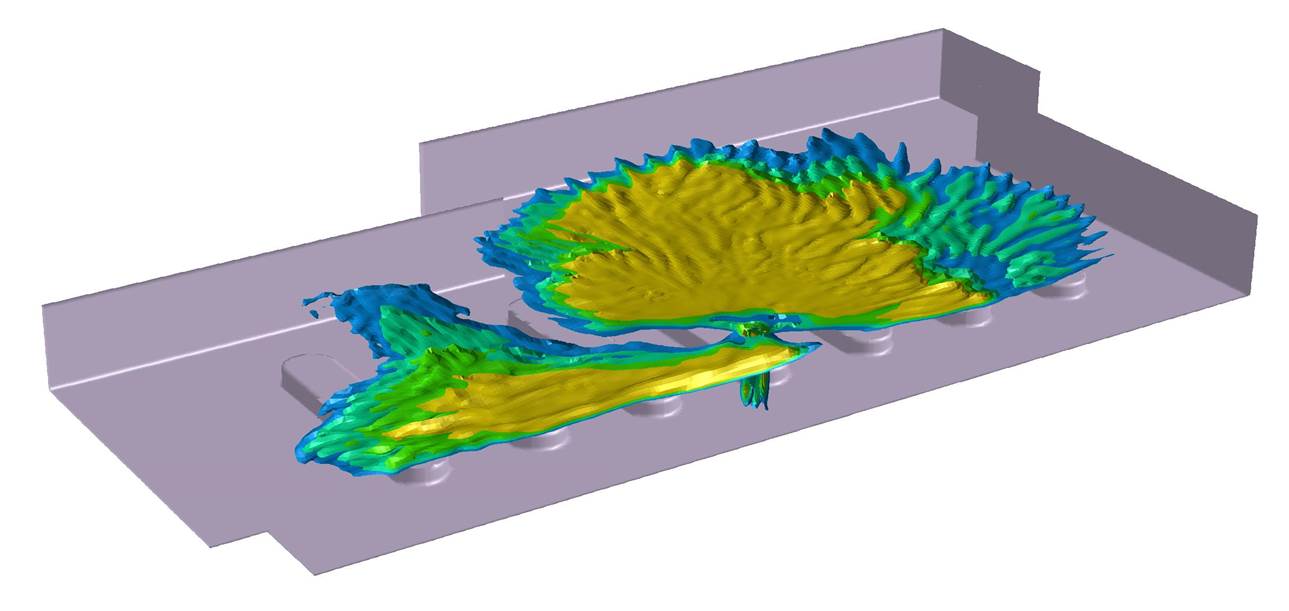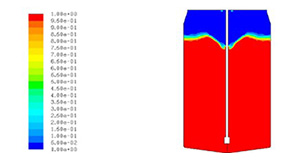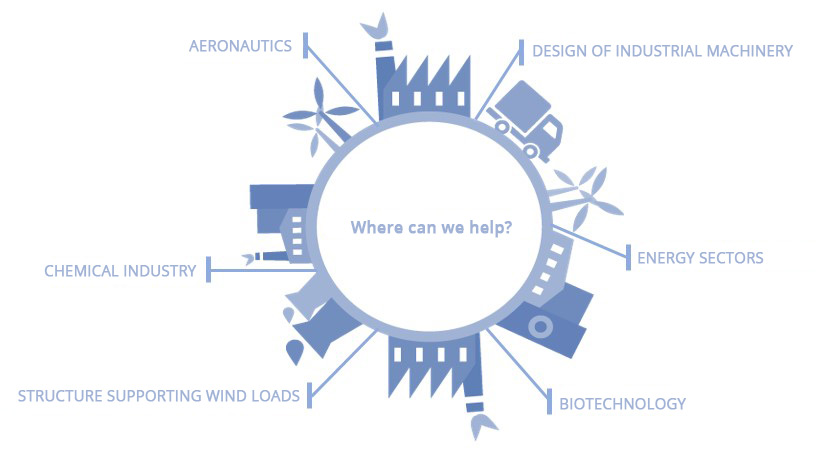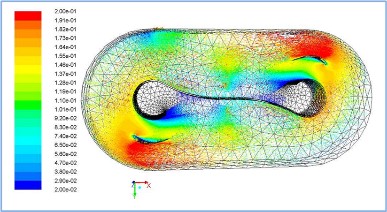CFD Modeling Techniques
D&BTech simulate the behavior of fluids in complex systems. Advanced software running on a set of 12 powerful servers is used for these numerical calculations.
Aerosol concentration simulations in closed spaces”: We study solutions to prevent COVID. Our knowledge and experience in CFD simulations support our studies on the movement of aerosols and particles in closed spaces. These studies provide support for COVID prevention in confined spaces or with limited ventilation. We thus provide advice on safety and prevention of contagions, providing possible solutions to minimize the accumulation of aerosols.
Heat transfer

Some examples:

Multiphase flows
The use of the CFD tool enables the simulation of all kind of multiphase flows, from small scales (drops, microbubbles) to free surface phenomena.
Different mathematical models facilitates the study of problems in which more than one fluid is present: mixture processes, dispersion of contaminants, drops and bubbles formation, cavitation, flows in channels with free surface and waves, etc.
Chemical and biological reactors
Mixing, mass and heat transfer are essential mechanisms in many stirred reactors both at laboratory (research and development) and industrial productive processes. Scaling of these processes is also another interesting application of CFD simulations.
The CFD tool allows for he optimization of these processes in terms of homogenization and stability, reducing time of reaction, shear forces on biological culture, energy consumption, etc.

Waterworks
Traditionallly, Civil Engineering (channels, dams, pumping stations, locks, ports, etc.) have been planned and executed according to calculation and design guidances which had been established and contrasted for a long time in the Schools of Engineering.
Sometimes, building and testing scaled models, allowed to ratify/modify the plans before the final construction at real scale.
The Numeric Simulation offers new possibilities for designing and detecting problems in a stage previous to scaled models, which has time/cost saving as a consequence.
Specific models
Taylored-made models can be implemented for any process in which fluids involved, to be analyzed with the CFD technique.
Once the simulation provides a satisfactory result (callibration of the model), the next steps of experimentation and later scaling at industrial level are approached with high probability of achieving success.

Aeroelasticity
The CFD tool is also indicated for an analysis previous to mechanic calculations in which tensions in the constitutive components of the structure are obtained in a realistic way.
The wide variety of contour conditions that may be imposed to the analyzed flow also permits to study a number of cases both in stationary and transitory regimes.
Experimental tests
Once CFD simulations have been contrasted with prototypes or experimental designs and correlation between results achieved through both ways have been validated, the technique is applied again for the so called “precise optimization” or if necessary for further scaling of bigger dimensions.





